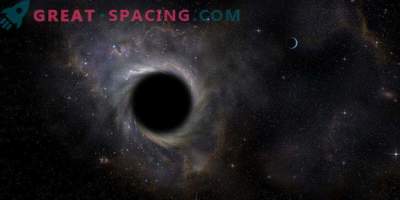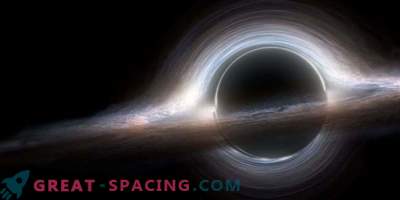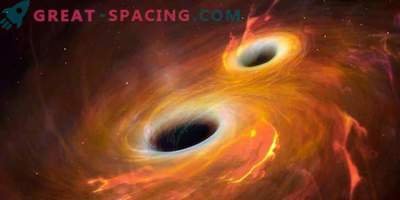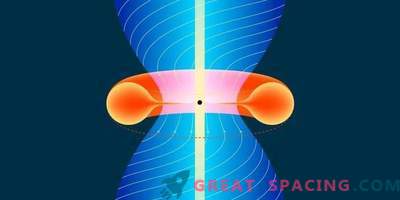
You can with horror prepare for a large-scale holiday feast, but imagine astrophysicists puzzling over how a supermassive black hole eats.
These are the most massive objects in the known universe. They inhabit the centers of most galaxies and can weigh from millions to billions of times the solar mass. In the Milky Way there is Sagittarius A, hiding in the galactic core about 20,000 light years from Earth with a mass of 4 million times the Sun. Although we know about the existence of these gravitational monsters, it is still difficult for us to understand how they grow to such sizes and how their growth is related to the evolution of their galaxies.
But we know that if some object is located at a dangerously close distance, then it will be torn to the state of superheated gas (plasma) - like an extremely hot cosmic smoothie, ready for use. This plasma turns into an accretion disk, slowly entering the horizon of a black hole event (the boundary surrounding the hole, where the gravitational curvatures of space are so great that even light cannot exit). As expected, they have a lot of radiation. These powerful properties manifest themselves in intense radio and X-rays and their presence is a signal that the black hole is now having lunch. Although their physics looks understandable, there are many objects that must be actively fed, but do not produce intensely emitting disks. As if they go out for a night snack, and the Universe does not know about it. This situation happens with Sagittarius A. Although it has an accretion disk, astronomers call it “radiation ineffective”. That is, it generates less radiation than expected.
“Hence the question: why is the disk so calm?”, Says astrophysicist Matthew Kuntz from the Department of Energy at the Princeton Physical Plasma Laboratory (PPPL).
In order to understand the problem, the Kunz team suggested focusing on what is happening on the small scales of the accretion disk. Although it is undoubtedly hot and filled with particles, their study suggests that this disk is relatively dilute (individual protons and electrons rarely strike each other). The absence of such an interaction probably distinguishes it from other disks.
The classical model of disks was developed according to the formula of the 1990s, which sees the plasma as an electrically conducting fluid with strongly interacting particles. But if you apply this formula to the disk of Sagittarius A, then it does not produce the emissions predicted by the model. This is a problem, because in our understanding, the liquid does not collide, which means that the particles cannot spiral down to the event horizon, and the hole is starving. In general, if you follow only this model, then a black hole can never absorb matter in a disk. Thus, in a new study published in the journal “Physical Review Letters”, the team reproduced the motion of individual particles orbiting a black hole in an accretion disk without a collision in order to explain weak spikes. But to do this, you need to write a complex code “that produces more accurate models (compared to astrophysical observations), predicting radiation from a black hole in the galactic center,” said Kunz.
Thanks to powerful computers, this new “kinetic” code can explain how such a supermassive hole creates so little radiation during its feast in space.











































